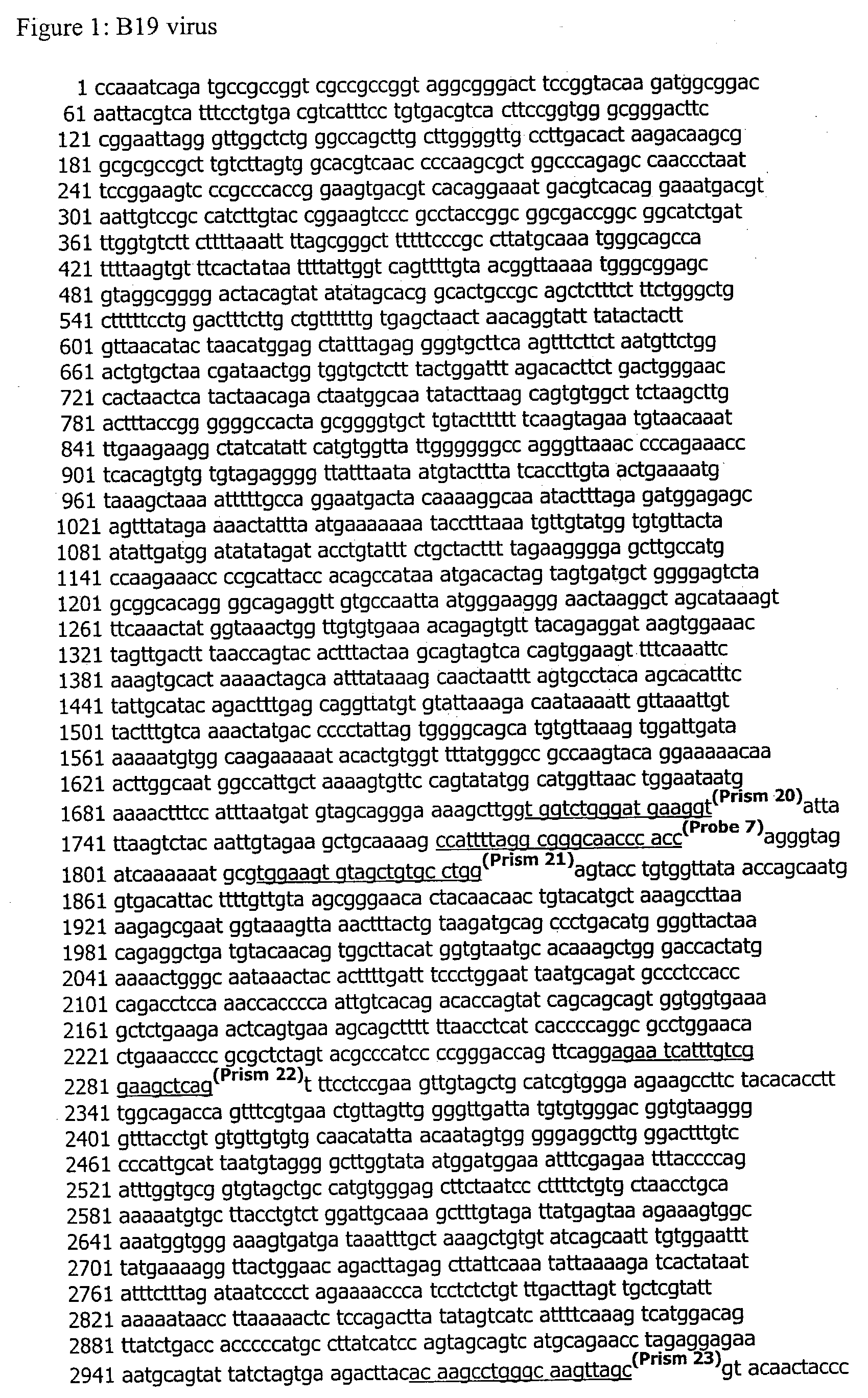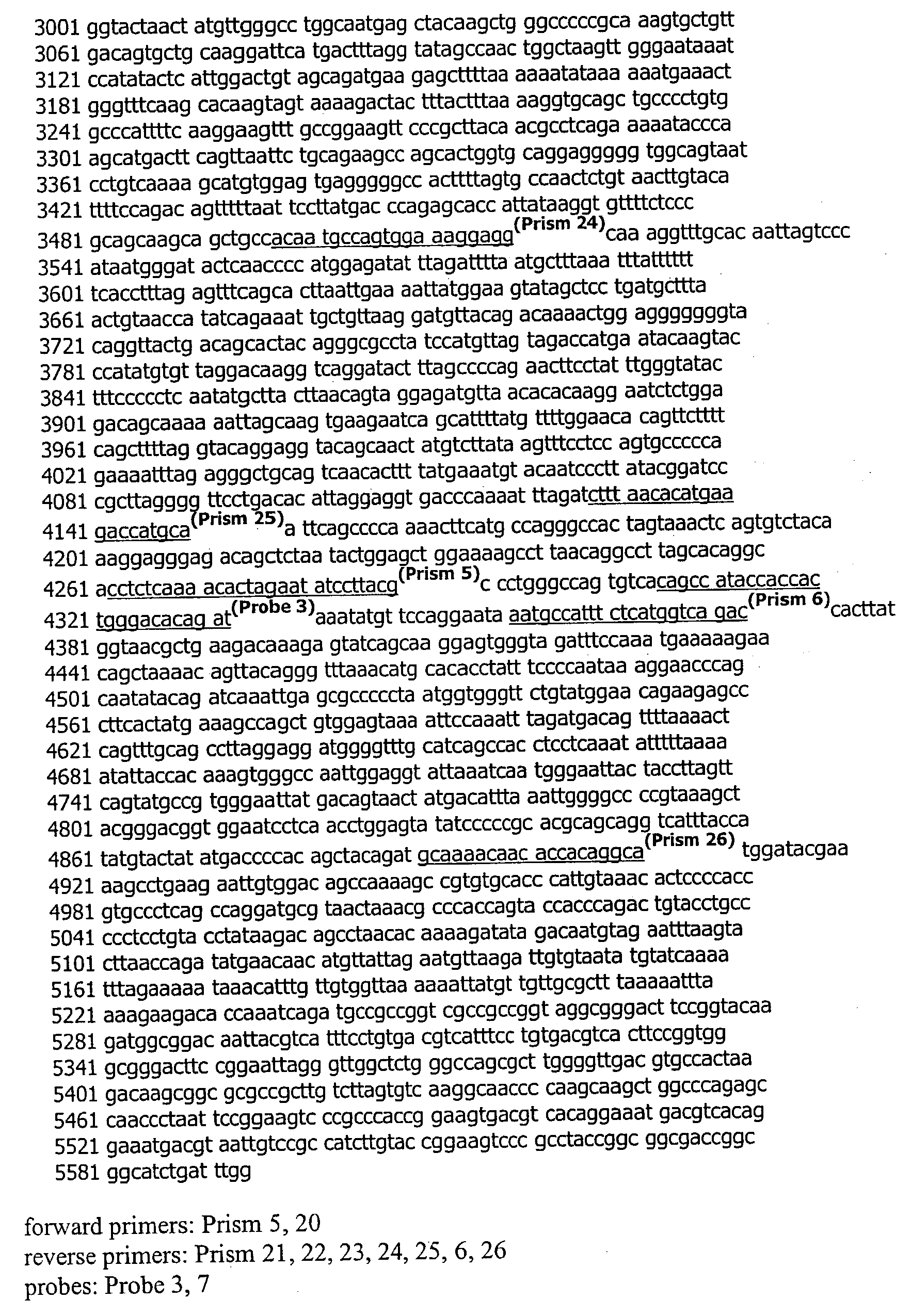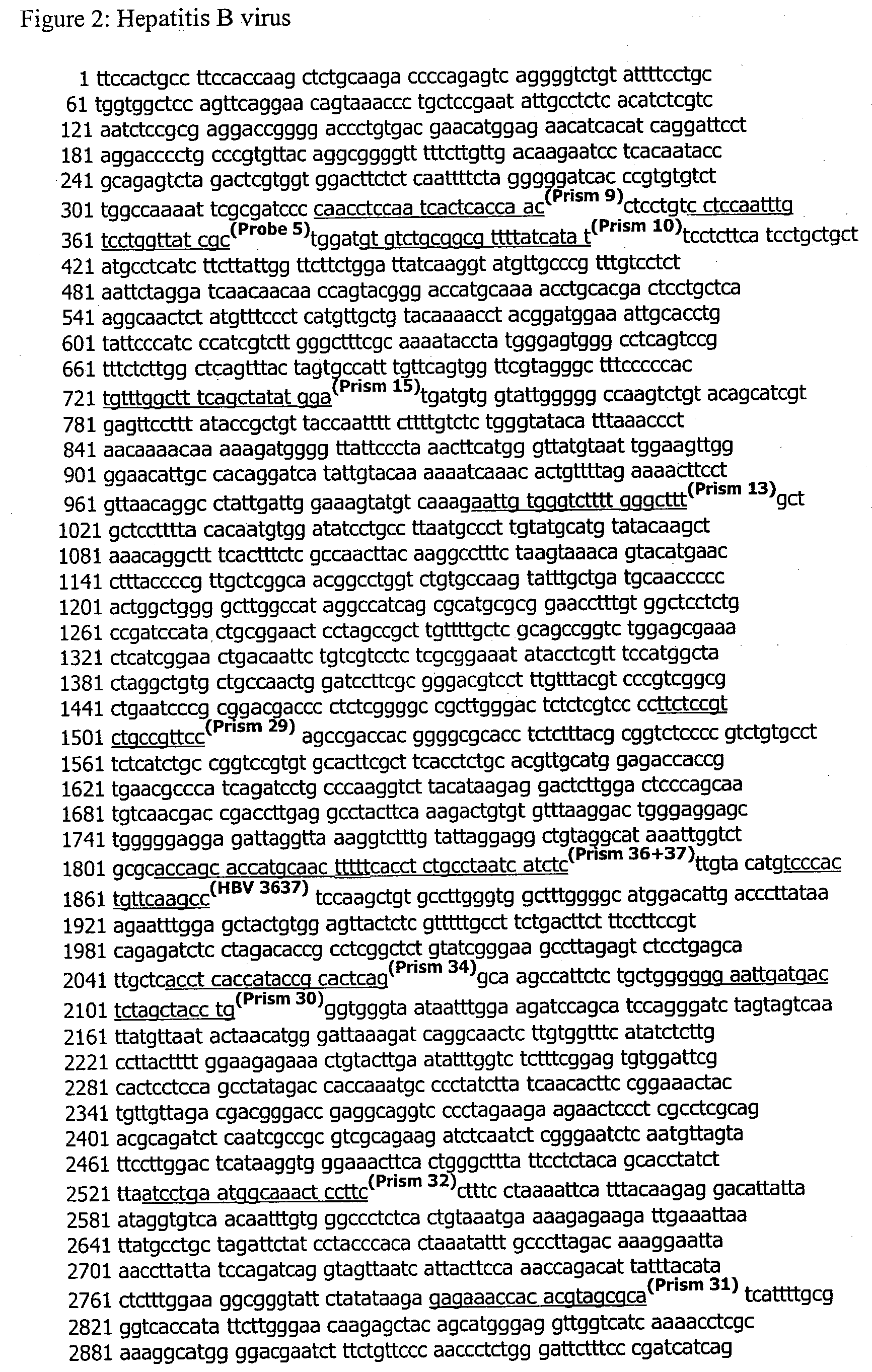Real-time polymerase chain reaction using large target amplicons
- Summary
- Abstract
- Description
- Claims
- Application Information
AI Technical Summary
Benefits of technology
Problems solved by technology
Method used
Image
Examples
example 1
[0059] Purpose: To demonstrate linear amplification of B19 DNA.
[0060] Materials: 1. B19 virus, titer 7.6.times.10.sup.11 iu / ml from Bayer;
[0061] 2. SNAP whole blood DNA isolation kit;
[0062] 3. Forward Primer: Prism 5 (FIG. 1);
[0063] 4. Reverse Primer: Prism 6 (FIG. 1);
[0064] 5. Probe 3 (FIG. 1) labeled with FAM at 5' end and TAMRA at 3' end;
[0065] 6. TaqMan Universal Master Mix, (ABI; cat. no. 4304437);
[0066] 7. DNASE, RNASE free water;
[0067] 8. ABI 96 well plate and adhesive cores;
[0068] 9. ANI 7000.
[0069] Procedure: 1. Followed SNAP protocol for extraction of 100 .mu.l B19 sample, eluted in 100 .mu.l TE;
[0070] 2. Diluted primers to 18 .mu.M with TE;
[0071] 3. Diluted probe to 5 .mu.M with TE;
[0072] 4. Prepared the following master mix:
[0073] TaqMan Master Mix: 25 .mu.l;
[0074] Prism 5: 2.5 .mu.l;
[0075] Prism 6: 2.5 .mu.l;
[0076] Taqman Probe 2.5 .mu.l;
[0077] Water: 12.54 .mu.l;
[0078] 5. Added 45 .mu.l of master mix per well;
[0079] 6. Serially diluted B19 DNA, adding water to the NTC ...
example 2
[0083] Purpose: To examine irradiated and unirradiated samples containing PPV using a 549 bp amplicon.
[0084] Materials: 1. PPV (irradiated at 0 kGy, 50 kGy, 65 kGy, 75 kGy or 85 kGy);
[0085] 2. SNAP Protein Degrader;
[0087] 4. Tris-HCl;
[0088] 5. Primers: Prism 11 and Prism 12 (FIG. 3); and
[0089] 6. Probe 6 (FIG. 3).
[0090] Procedure: 1. To 100 .mu.l viral sample, added 50 .mu.l tris-HCl buffer, 60 .mu.l protein degrader, and 200 .mu.l cell lysis buffer;
[0091] 2. Mixed and incubated for 25 minutes (5 minutes at 70.degree. C.);
[0092] 3. Diluted samples to 1 / 50, 1 / 500, 1 / 5000, 1 / 25000, 1 / 50000, 1 / 250000 and 1 / 500000;
[0093] 4. Ran PCR for 55 cycles.
[0094] Results: Results showed that unirradiated material had regular dilution series curves, irradiated material (50 kGy) behaved differently, dilute material did not amplify showing a reduction in the number of copies of the target sequence.
example 3
[0095] Purpose: To determine effects of gamma irradiation (0 kGy sample, 50 kGy sample, mixture of 0+50 kGy sample and 75 kGy sample) on samples containing PPV analyzed by PCR.
[0096] Materials: 1. PPV (irradiated at 0 kGy, 50 kGy or 75 kGy);
[0097] 2. Primers: Prism 11 & Prism 12, Probe 6 FIG. 3);
[0098] 3. Primers: Prism 1 & Prism 2, Probe 1 (FIG. 3).
[0099] Procedure: 1. Diluted samples containing PPV to 1 / 100, 1 / 1000, 1-2000, 1 / 10000, 1 / 20000, 1 / 40000 and 1 / 400000 (0 kGy, 50 kGy, 0+50 kGy and 75 kGy);
[0100] 2. Ran PCR program for 55 cycles.
[0101] Results: Irradiaition to 50 kGy of PPV material reduced amplification of 549 bp amplicon.
PUM
| Property | Measurement | Unit |
|---|---|---|
| Time | aaaaa | aaaaa |
| Time | aaaaa | aaaaa |
| Time | aaaaa | aaaaa |
Abstract
Description
Claims
Application Information
 Login to View More
Login to View More - R&D
- Intellectual Property
- Life Sciences
- Materials
- Tech Scout
- Unparalleled Data Quality
- Higher Quality Content
- 60% Fewer Hallucinations
Browse by: Latest US Patents, China's latest patents, Technical Efficacy Thesaurus, Application Domain, Technology Topic, Popular Technical Reports.
© 2025 PatSnap. All rights reserved.Legal|Privacy policy|Modern Slavery Act Transparency Statement|Sitemap|About US| Contact US: help@patsnap.com



